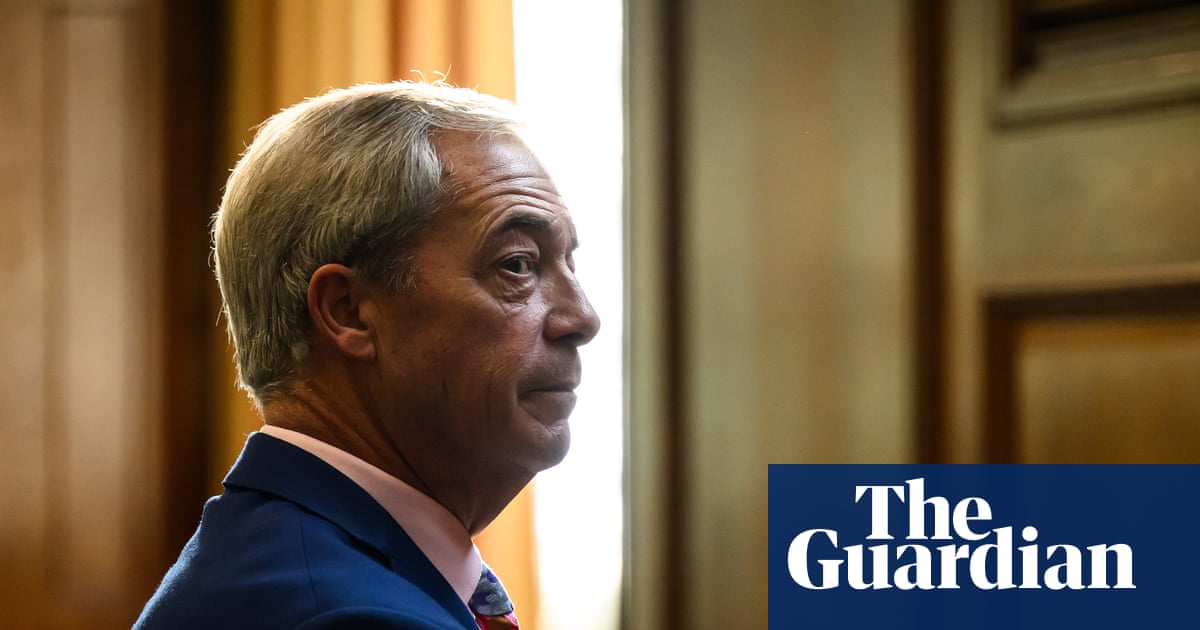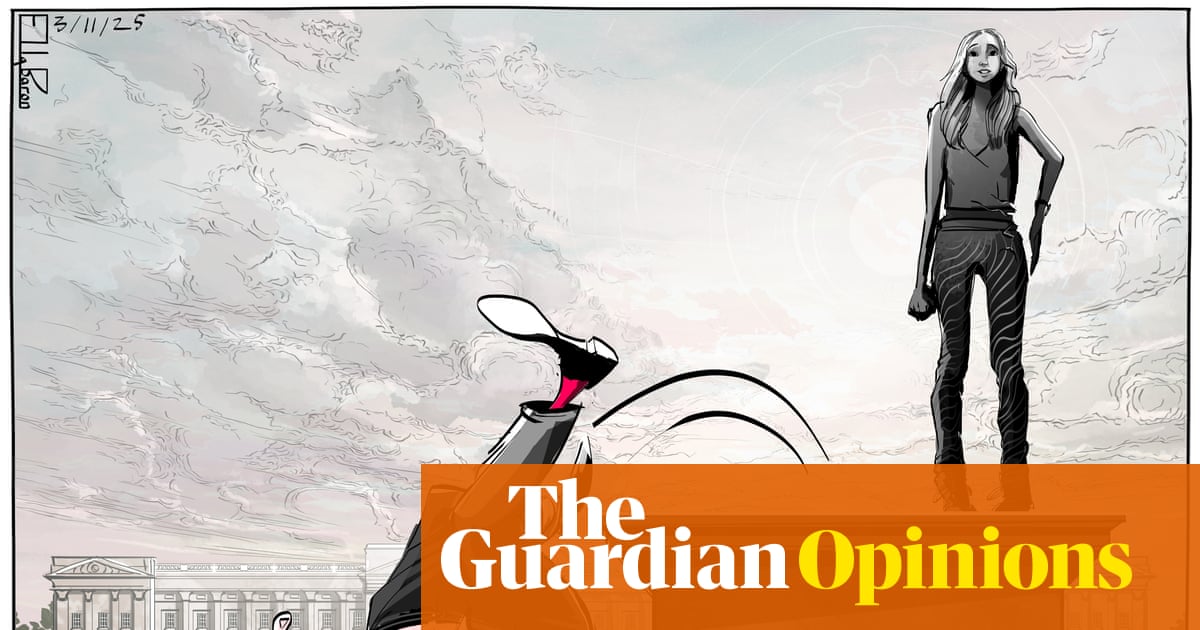Democrats enabled Donald Trump to become president twice because of repetition compulsions that still propel the party’s leaders – undermining the party’s potential to end the real-life nightmare of Maga control over the federal government. Scrutinizing how this century’s Democratic leaders set the stage for Trump’s electoral triumphs is crucial not only for clarity about the past. It also makes possible a vital focus on how such failures can be avoided in the future.
Elites did quite well after Barack Obama took back the presidency for Democrats in January 2009, amid the Great Recession. He bailed out big banks while a huge number of people lost their homes. By the time Obama was most of the way through his presidency, he had facilitated “the dispossession of at least 5.2 million US homeowner families, the explosion of inequality, and the largest ruination of middle-class wealth in nearly a century”, the journalist David Dayen pointed out.
Obama’s last year as president was supposed to lead to Hillary Clinton’s first. She was the party establishment’s favorite. “You know, I get accused of being kind of moderate and center,” Clinton told a Women for Hillary audience in 2015. “I plead guilty.” The Democratic National Committee and corporate media provided major assists as she withstood the strong progressive campaign of Bernie Sanders. But after winning the nomination, Clinton never got traction with younger voters, who had gone overwhelmingly for Sanders during the primaries.
After Trump defeated Clinton in November 2016, Democratic party leaders could hardly blame themselves or their “moderate and center” nominee. Criticizing her coziness with Wall Street wouldn’t do. Neither would critiquing her thinly veiled contempt for the progressive wing of the party. Instead, the swift response from prominent Clinton campaigners was to blame Russia, launching a prolonged fixation on “Russiagate” that let the corporate-friendly leaders of the party off the hook.
The party leadership’s devotion to economic elites continued to evade scrutiny. As Sanders told a reporter in 2017: “Certainly there are some people in the Democratic party who want to maintain the status quo. They would rather go down with the Titanic so long as they have first-class seats.”
Ensconced in plush staterooms, the top congressional Democrats, Nancy Pelosi and Chuck Schumer, kept a firm hold on the party’s legislators, deterring progressive efforts of much consequence as Trump became accustomed to wielding presidential power. The party discipline remained after Democrats won back the House in the 2018 midterm elections. With Pelosi again gripping the speaker’s gavel, her renowned ability to extract gobs of money from deep pockets went hand in hand with reinforcing continual deference to corporate power and a steady embrace of militarism benefitting giant corporations.
Shortly after the midterms, a Green New Deal sit-in at Pelosi’s Capitol office confronted the party’s anemic responses to the climate emergency. The Sunrise Movement charged that “Nancy Pelosi is bringing a squirt gun to a wildfire”. But the most powerful Democrat on Capitol Hill was dismissive, downplaying the climate crisis while further alienating activists in the youth-led climate movement and their allies. In February 2019, soon after settling back into the House speaker’s chair, Pelosi insulted supporters of the Green New Deal, referring to it in a media interview as “the green dream or whatever they call it, nobody knows what it is, but they’re for it, right?”
As the 2020 presidential election approached, the party establishment was eager to fend off another Sanders campaign. While some sounded the alarm, others engaged in wishful thinking from an entrenched bubble. “There will be hard-core, hard-left progressives who will have nobody but Bernie, but there won’t be many,” predicted Howard Dean, a former Vermont governor and long-ago liberal favorite who had become a hawkish corporate accessory.
But actually, as the second Sanders campaign for president gained momentum, corporate power brokers had reason to be afraid that his vigorous progressive populism was giving effective voice to majority views of the public. For corporate interests determined to retain undemocratic power, a successful Bernie 2020 campaign would be the worst possible outcome of the election.
That outcome was averted in the early spring of 2020, in part thanks to several competitors jointly bowing out and endorsing Joe Biden, who went on to foil Trump’s re-election bid by a thin margin. Biden was hardly the first president to take office at a time of swiftly widening income inequality, but more than most he began to do something about it. His first months included backing and signing the American Rescue Plan, a $1.9tn package that boosted the wellbeing of tens of millions of Americans.
Yet Biden’s resolve dissipated later in 2021. He opted to abandon Build Back Better legislation that would have been transformational, giving up the potential Democratic leverage that would have come with passing it in tandem with an infrastructure bill sought by Republicans.
Instead of challenging Biden to govern in alignment with the party’s base and to fulfill his 2020 pledge to be a transitional president (“Look, I view myself as a bridge, not as anything else”), leaders of the Congressional Progressive caucus joined with almost every Democratic colleague in muting policy criticisms and serving as enablers for a re-election try. By a 64%-26% margin, national polling midway through 2022 made clear, most of Biden’s own party didn’t want him to run for re-election, including a staggering 94% of Democrats under age 30. But Democrats in Congress began to declare that Biden should run for re-election; conformity of groupthink and fear of retribution from the White House kept people quiet.
A common canard was that because he had defeated Trump once, Biden was the best person to do it again. The claim ignored the fact that Trump 2020 had represented an unpopular status quo, and Biden 2024 would represent an even more unpopular status quo, as “right track/wrong track” polling made crystal clear. The message from Biden to Democrats was: nominate me, whether you like it or not.
When they weren’t pretending to be enthusiastic, Democratic officeholders were offering up servings of evasive drivel. The retiring senator Patrick Leahy of Vermont came up with this gem: “I want him to do whatever he wants. If he does, I’ll support him.”
By the time autumn 2023 began, one poll after another after another showed that Biden was continuing to weaken as a candidate for re-election. With an overall approval rating down to 19 points underwater, he had lost support among key demographics that made his slim 2020 victory possible – especially young people and people of color.
But on Capitol Hill, all was quiet on the Democratic front, where excessively loyal party-liners kept their noses to the talking-points grindstones. At the same time that a poll in September 2023 found 67% of “Democrats and Democratic-leaning independent voters” said they didn’t want Biden to run again, no more than 1% of Democrats in Congress were willing to say so in public. The gap signified an unhealthy, even virulent relationship between Democrats in office and the party’s base of voters.
While supposedly representing constituents to the party establishment, the bulk of Democrats in Congress were functioning more as representatives of the party establishment to constituents. It was a prescription for electoral disaster in 2024.
After Kamala Harris became the presidential nominee, she remained tone-deaf while the United States continued to massively arm the Israeli military as it methodically killed Palestinian civilians in Gaza. Harris ignored human decency and polling that showed far more voters would be likely to cast their ballots for her if she came out for an arms embargo on Israel. Her approach was part of the disconnect between the party’s top echelon and its voters that helped return Trump to the presidency.
During the last year, Democratic party leaders have been mostly in restrained disarray. Vast numbers of people who had expected Trump 2.0 to be disastrous were taken aback by just how terrible 2025 became. But Democrats in Congress and the Democratic National Committee – routinely hidebound and rarely creative – have fallen far short of meeting the dire moment.
As the top Democrats in government, Schumer and Hakeem Jeffries have been symptoms and perpetrators of the party’s afflictions, unable to convincingly pose as fighters for the working class. Their strongest affinities have remained elsewhere. Aside from rhetorical flourishes at times, the pair have doubled down on making nice with corporate America. Soon after Trump returned to the Oval Office, Jeffries traveled to California, met with Silicon Valley megadonors and reportedly “said Democrats were reaching toward the center, while Trump will swing harder right”.
Jeffries apparently wants to move his party even further away from what its voters want. Midway through this year, a poll found that a large majority of Democrats wanted elected officials to reduce “corporate influence”, while 86% “said changing the federal tax code so wealthy Americans and large corporations pay more in taxes should be a priority”.
after newsletter promotion
But Jeffries and Schumer are allergic to such progressive populism. That largely explains their cold reception to the winner of New York’s Democratic mayoral primary, Zohran Mamdani, whose platform includes higher taxes on the wealthy and corporations along with free city buses, a rent freeze and city-run grocery stores. Also antithetical to the duo’s politics is Mamdani’s unequivocal support for the human rights of Palestinian people being subjected to Israel’s US-backed policies of ethnic cleansing and genocide.
By refusing to endorse Mamdani, Schumer has been in tacit league with the billionaires furiously trying to prevent a popular democratic socialist from becoming mayor. For his part, Jeffries waited four months after the primary to endorse Mamdani just before voting began in late October.
“Democrats like Schumer and Jeffries are shooting their party in the foot,” the New Republic senior editor Alex Shephard observed in September. “Mamdani is a dynamic, charismatic candidate unlike any the party has seen for years. In June, he beat [Andrew] Cuomo, a former governor, by more than 10 points by activating middle-class voters … Predominantly renters, Mamdani’s voters were also disproportionately young, Asian, and Hispanic – all groups that moved toward Trump in last year’s election, and that Democrats will need if they want to take back Congress and the White House.”
In late summer, the New York Times published an in-depth analysis of voter registration data, with stunning conclusions: “The Democratic party is hemorrhaging voters long before they even go to the polls. Of the 30 states that track voter registration by political party, Democrats lost ground to Republicans in every single one between the 2020 and 2024 elections – and often by a lot.” About 4.5 million voters had shifted toward Republicans, the paper found.
Today, the Democratic party seems mostly stuck in the mud of the past, as if mired in the Joe Biden era of pinning election hopes on revulsion toward Donald Trump. Yes, the cascading horrors of Trump 2.0 call for fierce opposition – but just denouncing the regime’s bottomless pit of evils is not a good bet for ending GOP control of Congress in 2026 or the presidency in 2028.
Biden’s unspeakably tragic refusal to forgo running for re-election until far too late was enabled by timeworn party dynamics and follow-the-leader patterns that remain all too real.
As this decade enters its second half, progressives face the paradoxical challenge of helping to build a united front inclusive of anti-Trump corporatists and militarists, even while fighting against corporatism and militarism. The need involves a dialectical approach, recognizing the twin imperatives of defeating a viciously anti-democratic Republican party while working to gain enough power to implement truly humane agendas that inspire voters.
“An individual is no match for history,” says the narrator of a novel by the Chilean anti-fascist Roberto Bolaño. That observation might not be open to dispute. But many individuals together, propelling social movements, can be another matter.
If widespread and sustained, grassroots activism could force the Democratic party leadership to stop blocking policy proposals that offer major uplift to huge numbers of Americans in economic and social distress. Potential remedies are clear: enhanced Medicare for All. Free childcare. Free public college. Tax relief for the large majority in sync with big tax hikes for the wealthy and large corporations. Federal programs ensuring good jobs, including a Green New Deal. Requirements that large companies receiving government support cannot engage in mass layoffs. And much more.
Such proposals routinely poll with high approval across the political spectrum. They could strip away the bogus veneer of populism from the Republican party and create a genuine groundswell of support for Democrats from non-affluent voters. But unless control of the Democratic party can be wrested away from the corporate elites who continue to dominate it, the fascistic Republican momentum is very likely to continue.
What’s giving me hope now
I see hope in an emerging united front against the Trump regime. The turnout of 7 million people at No Kings protests two weeks ago reflects that huge numbers of people in the United States want to creatively resist, in stark contrast with Democratic party leaders stuck in the past. Stronger grassroots organizing can light the way to salvage the future.
-
Norman Solomon is the director of RootsAction and executive director of the Institute for Public Accuracy. His latest book is War Made Invisible: How America Hides the Human Toll of Its Military Machine

 8 hours ago
9
8 hours ago
9

















































